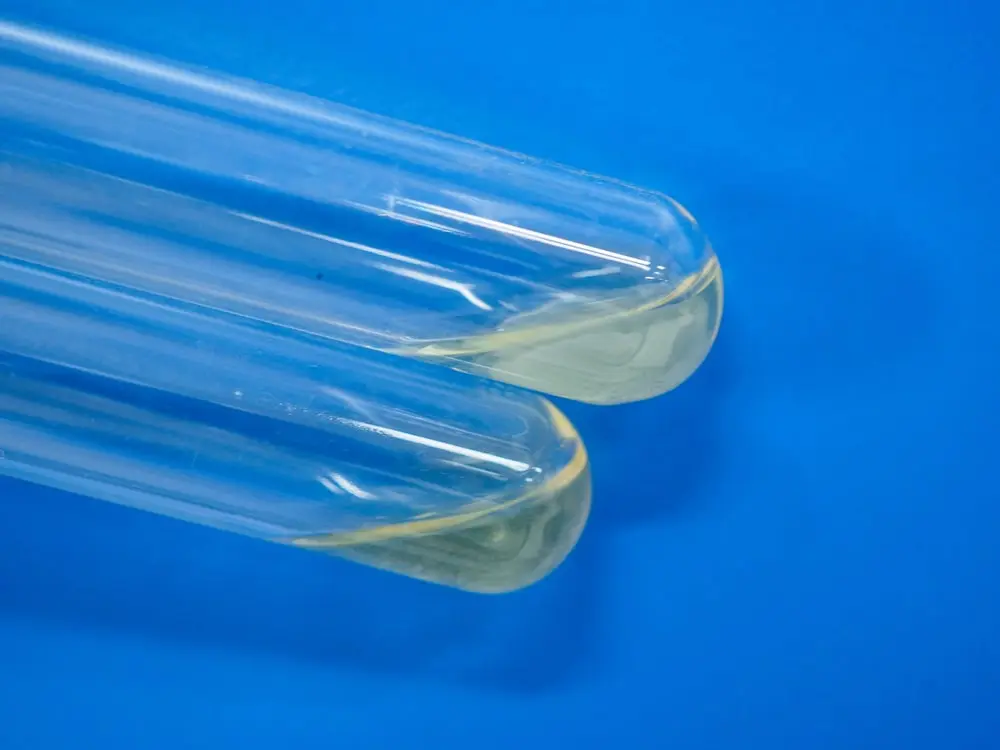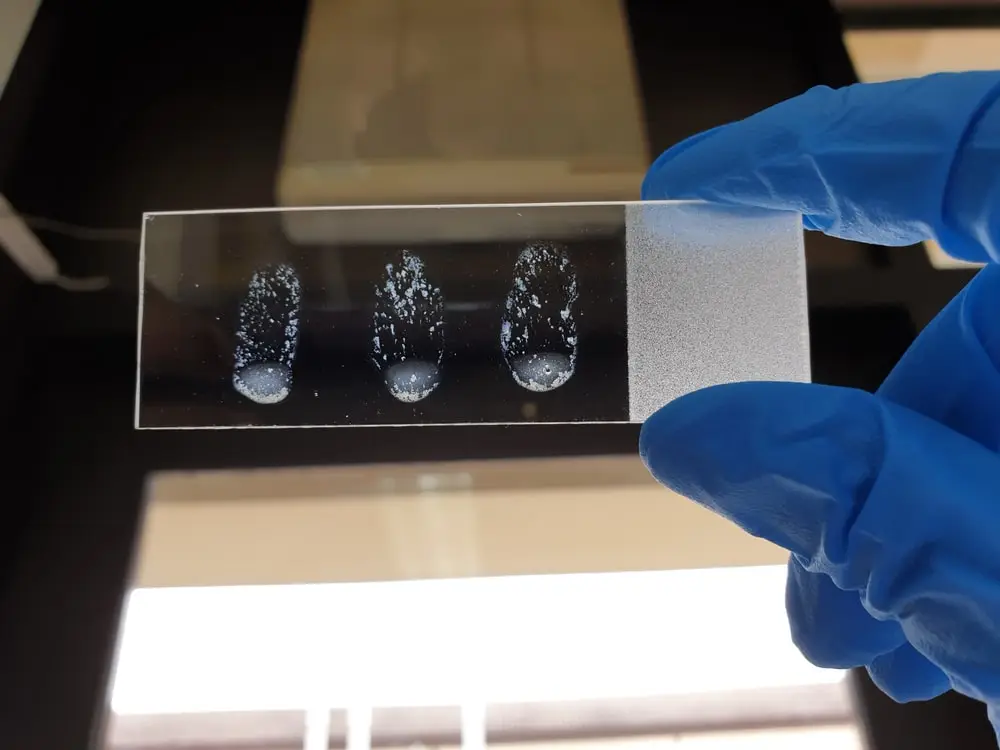Introduction
The coagulase test is a laboratory technique used to identify Staphylococcus aureus, a gram-positive bacterium that is commonly found on the skin and mucous membranes of humans and animals. The test is based on the detection of the enzyme coagulase produced by S. aureus, which can cause blood to clot.
The coagulase test differentiates S. aureus from other coagulase-negative staphylococci (CoNS). CoNS are a group of bacteria that are closely related to S. aureus but do not produce coagulase. Therefore, the presence of coagulase in a bacterial culture is a characteristic feature of S. aureus, and the absence of coagulase is an indication of CoNS.
The coagulase test can be performed using two methods: the tube coagulase test and the slide coagulase test. In the tube coagulase test, the organism is grown in a liquid medium containing rabbit plasma. If coagulase is produced, the plasma will clot and form a visible clot in the test tube. In the slide coagulase test, a drop of plasma is mixed with a colony of the organism on a glass slide. If coagulase is produced, the plasma will clot and cause the bacterial cells to clump together.
Importance of coagulase test in clinical microbiology
S. aureus is an opportunistic pathogen that can cause a wide range of infections, from minor skin infections to life-threatening conditions such as sepsis and endocarditis. Therefore, accurate and rapid identification of S. aureus is critical in clinical microbiology. The coagulase test is a simple and reliable method for identifying S. aureus in clinical samples such as blood, urine, and wound swabs.
In addition to identifying S. aureus, the coagulase test can also be used to differentiate CoNS from S. aureus. CoNS are commonly found on the skin and mucous membranes of humans and animals and are generally considered to be harmless.
However, they can cause opportunistic infections in immunocompromised patients, particularly those with indwelling medical devices such as catheters and prosthetic devices. Differentiating CoNS from S. aureus is important in determining the appropriate treatment and management of infections caused by these bacteria.
Principle of the Coagulase Test
The coagulase test is based on the principle of detecting the presence of the enzyme coagulase, which is produced by Staphylococcus aureus. Coagulase is an extracellular protein that converts fibrinogen (a soluble plasma protein) into fibrin (an insoluble protein), leading to the formation of a clot. The clot formation provides a means of differentiating S. aureus from other staphylococci that do not produce coagulase.
Coagulase enzyme and its role in clot formation:
Coagulase is a virulence factor produced by S. aureus that helps the bacteria to evade the host immune system. The enzyme is thought to play a role in the formation of abscesses, which are collections of dead tissue and pus that develop in response to bacterial infections. Coagulase binds to fibrinogen, which is present in high concentrations in plasma, and converts it into fibrin. Fibrin forms a mesh-like network that traps bacterial cells and other debris, leading to the formation of a clot.
Types of coagulase (free and bound) and their significance:
There are two types of coagulase: free coagulase and bound coagulase.
- Free coagulase is an extracellular protein that can activate prothrombin to form thrombin, which then converts fibrinogen to fibrin.
- Bound coagulase, also known as a clumping factor, is a surface protein that binds to fibrinogen and causes clumping of the bacterial cells, leading to the formation of a visible clot.
The presence of bound coagulase is considered to be a more specific indicator of S. aureus than the presence of free coagulase, as other bacteria such as Staphylococcus intermedius can also produce free coagulase. However, the tube coagulase test detects both free and bound coagulase, while the slide coagulase test detects only bound coagulase.
Materials
- Staphylococcus culture
- Blood plasma (human or animal)
- Sterile loop or needle
- Sterile test tube (for tube coagulase test)
- Glass slide (for slide coagulase test)
- Incubator (37°C)
- Control Staphylococcus strains (optional)
Procedure for Tube Coagulase Test
- Prepare a bacterial culture of the Staphylococcus strain being tested, using standard microbiological techniques.
- Inoculate a sterile loop or needle with a small amount of the bacterial culture and transfer it to a tube of blood plasma.
- Incubate the tube at 37°C for up to 24 hours.
- Observe the tube for clot formation. If coagulase is present, the plasma will clot, forming a solid mass at the bottom of the tube. If the plasma remains liquid, the test is negative.

Procedure for Slide Coagulase Test
- Prepare a bacterial culture of the Staphylococcus strain being tested, using standard microbiological techniques.
- Place a drop of plasma on a clean glass slide.
- Using a sterile loop or needle, transfer a small amount of the bacterial culture onto the plasma drop.
- Gently rock the slide back and forth for a few minutes.
- Observe the slide for clot formation. If coagulase is present, the plasma will clot, forming visible clumps around the bacterial cells. If the plasma remains liquid, the test is negative.

Interpretation of Results
- A positive coagulase test indicates the presence of coagulase-producing Staphylococcus strains, which include the most clinically significant Staphylococcus aureus strains.
- A negative coagulase test indicates the absence of coagulase-producing Staphylococcus strains, which includes most coagulase-negative Staphylococcus strains.
Note: False-positive and false-negative results can occur due to technical errors or variations in the bacterial strains being tested. Therefore, it is important to perform the coagulase test with appropriate controls, such as known positive and negative strains.
Applications of the Coagulase Test:
The coagulase test has several applications in clinical microbiology, including:
- Identification of Staphylococcus aureus: The coagulase test is widely used to identify S. aureus from other staphylococci. S. aureus is the only staphylococcal species that produce coagulase, and the test is highly specific for this organism. The test is usually performed on colonies grown on culture media, and the presence of a clot indicates the presence of S. aureus.
- Differentiation of S. aureus from other coagulase-negative staphylococci: The coagulase test can also be used to differentiate S. aureus from other coagulase-negative staphylococci, such as Staphylococcus epidermidis and Staphylococcus saprophyticus. These organisms are important opportunistic pathogens and are often found on the skin and mucous membranes. The ability to differentiate S. aureus from other staphylococci is important because S. aureus is a more virulent organism and can cause severe infections.
- Use in epidemiological investigations: The coagulase test can also be used in epidemiological investigations to determine the source of an outbreak of S. aureus infections. By performing the coagulase test on isolates from different patients, it is possible to determine whether the infections are caused by the same strain of S. aureus. This information can help public health officials to identify the source of the outbreak and to implement appropriate control measures.
In addition to its use in clinical microbiology, the coagulase test has other applications in the food industry. The test can be used to detect S. aureus in food samples, particularly dairy products such as cheese and milk. S. aureus can produce enterotoxins that cause food poisoning, and the coagulase test can be used to monitor the levels of S. aureus in food products to ensure food safety.
Variations and Modifications of the Coagulase Test
There are several variations and modifications of the coagulase test that are used in different laboratory settings. The tube coagulase test and slide coagulase test are the most commonly used tests. However, there are other variations, such as the plasma fibrinogen test, the rabbit plasma coagulase test, and the latex agglutination test, which are used for the rapid identification of CoPS strains.
The plasma fibrinogen test uses a specific reagent to detect fibrinogen in plasma, which is converted to fibrin by the coagulase enzyme produced by CoPS strains. The rabbit plasma coagulase test uses rabbit plasma instead of human plasma and is more sensitive than the tube coagulase test. The latex agglutination test uses latex particles coated with antibodies against CoPS antigens, which agglutinate in the presence of CoPS antigens.
References
- Tortora, G. J., Funke, B. R., & Case, C. L. (2021). Microbiology: An introduction. Pearson Education Limited.
- Willey, J. M., Sandman, K. M., Wood, D. H., & Prescott, L. M. (2019). Prescott’s microbiology (11th ed.). McGraw Hill.
- Cappuccino J.G. and Sherman N. 2008. Microbiology: A Laboratory Manual, 8th ed. Pearson Benjamin Cummings, San Francisco, CA, USA.
- https://asm.org/ASM/media/Protocol-Images/Coagulase-Test-Protocol.pdf?ext=.pdf
Frequently Asked Questions
What is the coagulase test?
A coagulase test is a diagnostic tool used in microbiology to identify the presence of Staphylococcus aureus and differentiate it from other coagulase-negative staphylococci.
How is the coagulase test performed?
The coagulase test is usually performed on colonies grown on culture media. A small amount of plasma is added to the bacterial culture, and the mixture is observed for the presence of clot formation. A positive result indicates the presence of S. aureus.
What is the principle of the coagulase test?
The coagulase test is based on the ability of S. aureus to produce the enzyme coagulase, which converts fibrinogen to fibrin, leading to clot formation.
What are the types of coagulase?
There are two types of coagulase: free and bound. Free coagulase is a soluble enzyme that circulates in the blood and causes clotting. Bound coagulase is an enzyme that is attached to the surface of S. aureus and also causes clotting.

